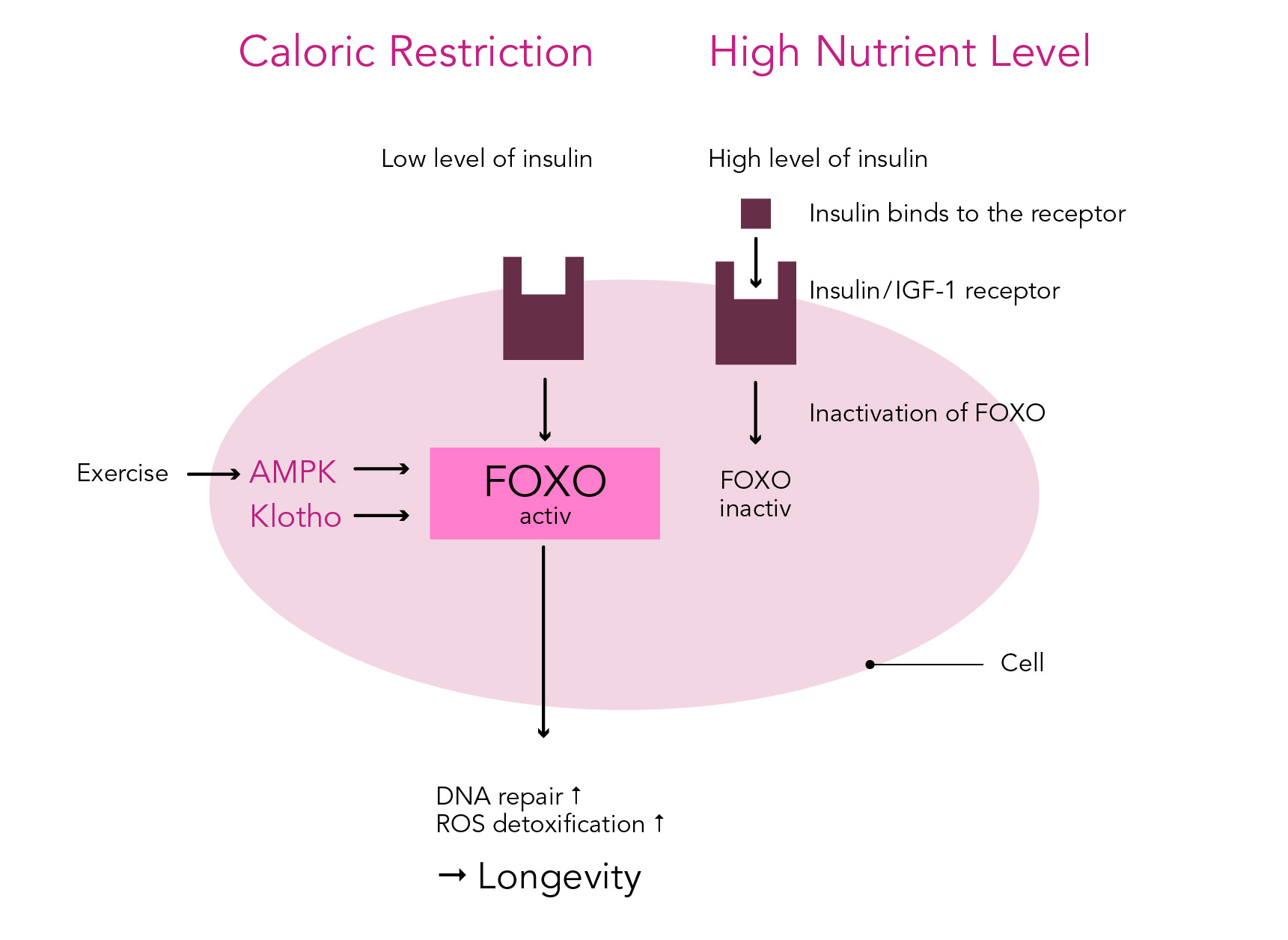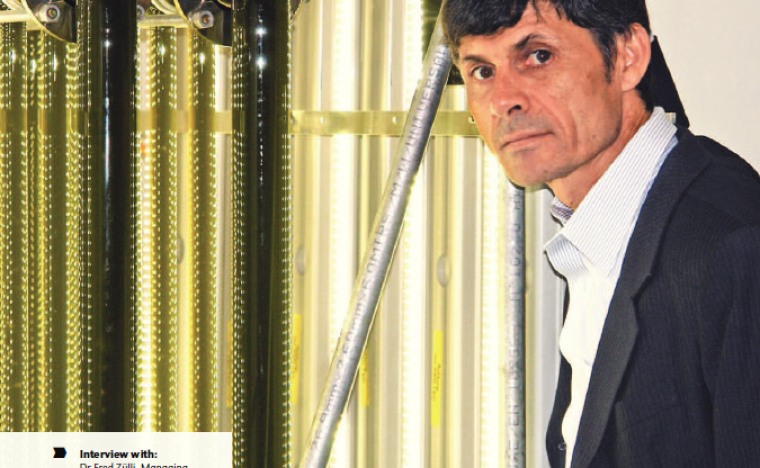Caloric restriction: Eat fewer calories and live longer
Caloric restriction results in a longer and healthier life, but is it possible to counteract the aging process of the skin the same way?
Searching for the fountain of youth
The quest for eternal life has existed throughout human history. Among the many approaches to finding longevity, caloric restriction (CR) has received a lot of attention in the last few years.
The first evidence indicating the benefits of CR date back to the 1930s in studies conducted by Clive McKay, an American biochemist and gerontologist. In tests with rats, he was able to show that animals eating a balanced diet with a 50% reduction in calories lived almost twice as long as animals which were permitted to eat as they desired. In the following years, the same phenomenon was observed in dogs and monkeys.
Does caloric restriction also work for humans?
Could we double our life expectancy by reducing calories by 50%? Unfortunately it doesn’t quite work like that for humans. However, the study does show that a balanced diet with fewer calories clearly leads to an improvement in risk factors such as high blood pressure, adverse blood fat levels and other similar indicators. In view of this, so-called “CRONies” (caloric restriction with optimal nutrition) try to maintain a strict diet with 10 to 25% fewer calories. They are not trying to lose weight, they are trying to live longer and healthier.
There are many facts that support this theory for humans. Fasting is an integral part of many religions and has shown similar positive effects. It is also known that the island of Okinawa has four to five times more resident centenarians than any other industrial country. The reason for this is apparently their special diet, which comprises lots of fish and vegetables but also 20% fewer calories than the rest of Japan. In Europe, the shortage of food during the Second World War and the period afterwards resulted in a dramatic reduction in heart attacks. After the food supply returned to normal, coronary heart disease increased again.
How does the anti-aging effect of caloric restriction work?
At Mibelle Biochemistry, we have intensively studied the biochemical processes in cells which occur with caloric restriction and physical exertion. A key role is thereby played by the so-called transcription factor FOXO. A transcription factor can switch genes on and off, and in this case it does so for resistance and longevity. FOXO is activated by the AMPK protein (see diagram below, left-hand side), which works like an energy sensor and is mainly produced during physical exertion. In this way, a wide-ranging anti-aging effect is induced.

Sleep disorders cause common illnesses
In addition, the anti-aging hormone Klotho, named after the Greek goddess of fate, also plays an important role. It was discovered in mice that had rapidly aged due to a Klotho deficiency in 1997. Similar to the effects of physical exertion, high concentrations of Klotho in cells helps the transcription factor FOXO to remain activated.
Interestingly, high FOXO activity can also be achieved through caloric restriction. In a calorie-reduced diet, only a small amount of insulin is released and therefore the insulin and IGF receptors remain free. In turn, FOXO transcription factors are then activated. Conversely, a high calorie intake leads to FOXO inactivation (see diagram above, right-hand side). Calorie-rich diets cause a large amount of insulin to be released, which then binds to the insulin and IGF receptors. This results in FOXO inactivation and the progression of the aging process.
From the caloric restriction theory to anti-aging cream
We all know that a balanced, calorie-reduced diet and regular sport helps us to live healthier and longer lives. We now understand (at least partially!) the biochemical effects of diet and physical activity on our bodies. This logically leads us to ask the questions: Is there a substance that induces exactly the same biochemical processes in our cells without requiring us to do sport or follow a special diet? Is it possible to counteract the aging process of the skin the same way?
Anti-aging with snow algae
It turns out that it really is possible. Using an extract from snow algae, we were able to demonstrate that the energy sensor protein AMPK can be reactivated in older skin cells and the amount of the anti-aging hormone Klotho can be increased. In clinical studies, the active agent in snow algae resulted in significantly stronger, smoother skin with improved moisture levels and a reduction in age spots.
“Caloric restriction mimetic anti-aging” is a completely new approach in cosmetics. As a holistic concept, it offers a long-lasting effect by not only counteracting individual symptoms but also by slowing down the overall aging of skin cells. This approach has an even greater importance in the nutraceuticals industry. Rather than increasing life expectancy, the primary goal here is to improve the quality of life. This sums up the essence of “healthy aging” – adding life to the years and not years to the life.









